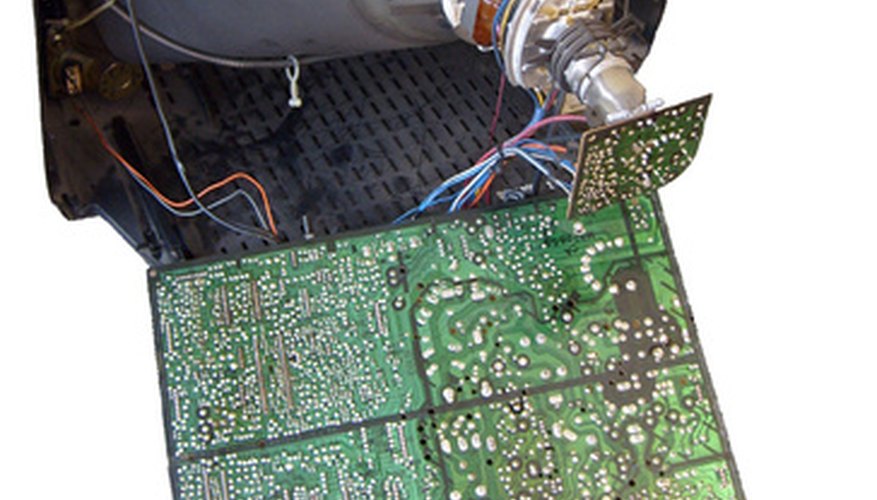Cathode Ray Tube (CRT) TVs are bulkier televisions that are not manufactured anymore. They use a technology called a "light gun" to shoot colours at the screen to create the picture. CRT TVs are larger than contemporary flat-screen models because of the large colour gun they contain. They are also extremely heavy.
Commercial Models
According to hdtvsolutions.com, the largest commercially available model CRT TV is about 45 inches and weighs several hundred pounds. As the size of the screen increases, the so does the size of the picture tube, making the TV much bulkier. Larger TVs are not marketable. The depth, weight and cost made them difficult to sell. A 50-inch TV would require a 38-inch picture tube and even larger casing, making it near impossible for the TV to fit inside a standard door. Larger TVs would also weigh that much more.
- According to hdtvsolutions.com, the largest commercially available model CRT TV is about 45 inches and weighs several hundred pounds.
- A 50-inch TV would require a 38-inch picture tube and even larger casing, making it near impossible for the TV to fit inside a standard door.
Heaviest
The heaviest CRT TV weighed 340 Kilogram and measured 40 inches. As CRT technology improved, manufacturers were able to reduce the weight of their TVs. The first CRT TVs were much heavier than later models. For example, a 32-inch TV in the early 90s may have weighed as much as a 40-inch in the year 2000.
- The heaviest CRT TV weighed 340 Kilogram and measured 40 inches.
- The first CRT TVs were much heavier than later models.
Record Holder
Mitsubishi was experimenting with larger CRT models and produced only a few 61-inch CRT TVs. The technology proved to be too unstable and the picture tubes on these TVs did not last long. As a result, they were discontinued quickly. The florescent contents of the CRT picture tube are highly dangerous and manufacturers were not able to make larger models that were safe.
- Mitsubishi was experimenting with larger CRT models and produced only a few 61-inch CRT TVs.
- The technology proved to be too unstable and the picture tubes on these TVs did not last long.
